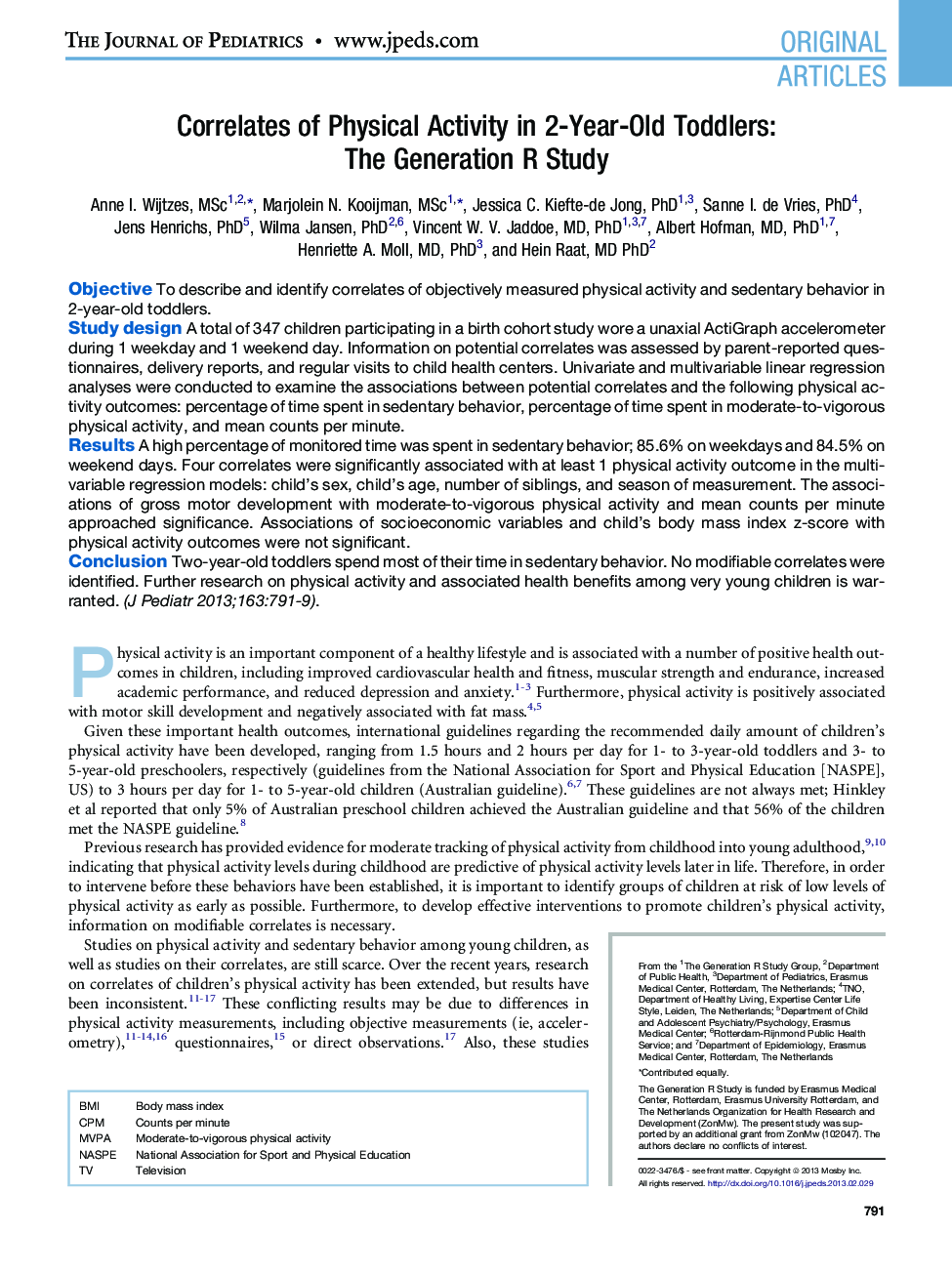| Article ID | Journal | Published Year | Pages | File Type |
|---|---|---|---|---|
| 6222746 | The Journal of Pediatrics | 2013 | 11 Pages |
ObjectiveTo describe and identify correlates of objectively measured physical activity and sedentary behavior in 2-year-old toddlers.Study designA total of 347 children participating in a birth cohort study wore a unaxial ActiGraph accelerometer during 1 weekday and 1 weekend day. Information on potential correlates was assessed by parent-reported questionnaires, delivery reports, and regular visits to child health centers. Univariate and multivariable linear regression analyses were conducted to examine the associations between potential correlates and the following physical activity outcomes: percentage of time spent in sedentary behavior, percentage of time spent in moderate-to-vigorous physical activity, and mean counts per minute.ResultsA high percentage of monitored time was spent in sedentary behavior; 85.6% on weekdays and 84.5% on weekend days. Four correlates were significantly associated with at least 1 physical activity outcome in the multivariable regression models: child's sex, child's age, number of siblings, and season of measurement. The associations of gross motor development with moderate-to-vigorous physical activity and mean counts per minute approached significance. Associations of socioeconomic variables and child's body mass index z-score with physical activity outcomes were not significant.ConclusionTwo-year-old toddlers spend most of their time in sedentary behavior. No modifiable correlates were identified. Further research on physical activity and associated health benefits among very young children is warranted.
